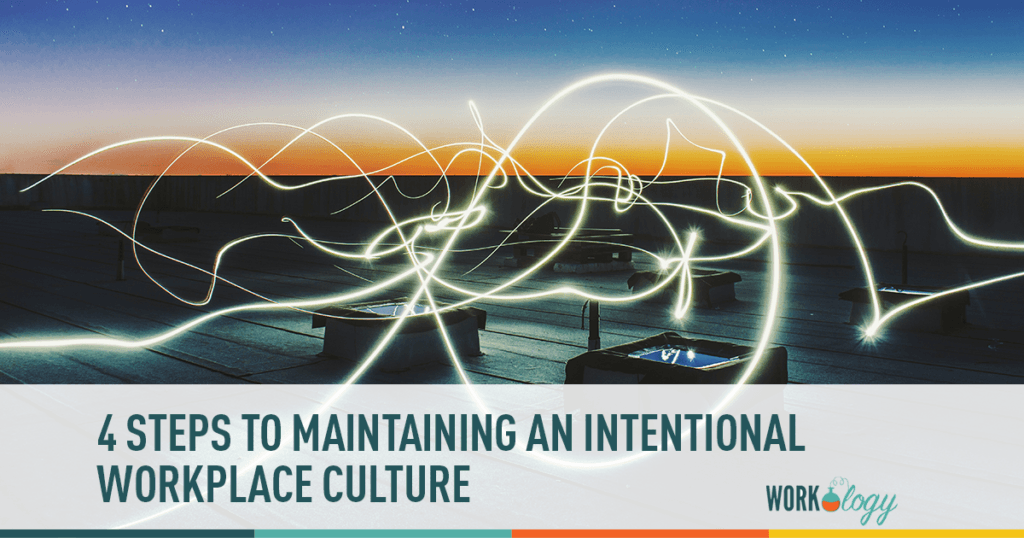A culture exists in your workplace. It doesn’t matter if the leadership designed one or not, or if they spent three days at an off-site meeting to define “The Way We Work”. It doesn’t matter if they communicated what they want the culture to be. A culture exists.
There are the LCD Cultures (Least Common Denominator) that are determined by what employees do and how management reacts. These cultures are accidental at best, and both fragile and fluid. They break easy and take the shape of the employees’ common interests.
And then there are Intentional Cultures. This happens when leaders take the time to identify what the core values and principles of their business are, and then work every day to make sure they are personified in every employee. They also “check and adjust” by assuring that their culture is achieving the desired business result – helping them win and maintain customers as well as retaining employees that make a difference.
4 Steps to Maintaining an Intentional Workplace Culture
Assuming you have taken the time to develop a view and vision for what your workplace culture needs to be to deliver the business strategy, there are a few things you have to do to make it a reality.
- Communicate – I know, this is obvious, but you do have to tell your employees what your culture is. New employees may think that the way they did things at their former employer were best, and you need to align them to the way you do things. You have to communicate the what, the why, and how you intend to get there if you are not there already.
- Train – What does this new cultural imperative mean? If we are going to institute a standard of “Think Customer”, does that mean your customer service people will have latitude in handling problems? Does it mean, if I have more freedom to act on behalf of the customer, that I won’t be second-guessed for not handling a problem the same way my manager tells me he would have after the fact?
- Motivate – Make sure employee understand how the culture is exemplified in behaviors, and reward and recognize when people are demonstrating those behaviors. And not just for the first three months. Forever. Do you have performance objectives? Make sure that the objectives contain a measure related to the desired behaviors.
- Model – Managers don’t get a pass. If they don’t model the expected culture and its associated behaviors, there is little chance you will get the culture you want. Showing is so much better than telling. And that means leaving the door open for employees who see contrary behavior of leaders to call it out when they see it. That alone is a significant cultural change for many organizations, but critical to have if you really believe that culture is important.
Four things. Easy, right?
One word of caution – don’t over-reach. Don’t choose cultural norms or expected behaviors because they are trendy – choose them because they are important to the success of the enterprise. “Having fun at work” may sound like an important idea, but not if you are the owner of a chain of funeral homes. Choose wisely, follow these steps, and then make sure that the choices matter.
Lastly, make sure that what you define as culture doesn’t defeat the advantage of diversity of thought. I don’t know about you, but I could not enjoy working in an environment where everyone was so aligned to everything that there was no room for challenge.








